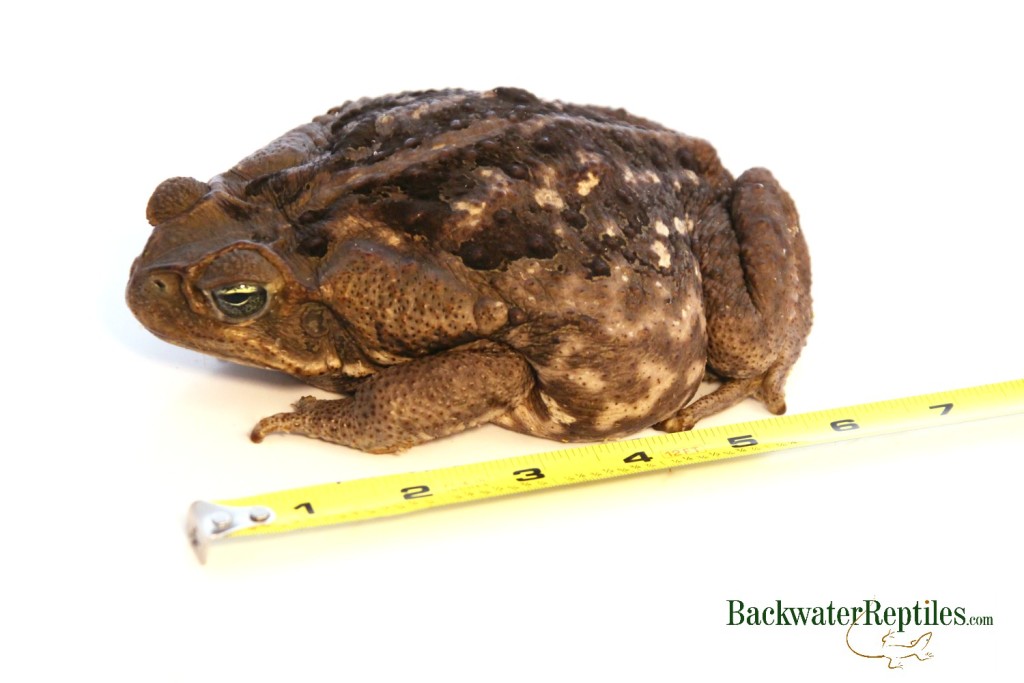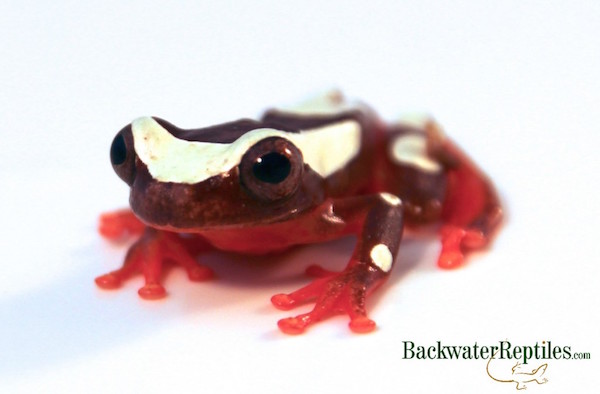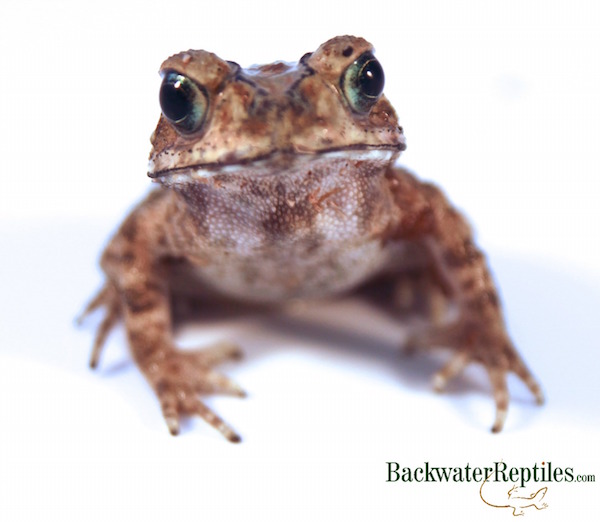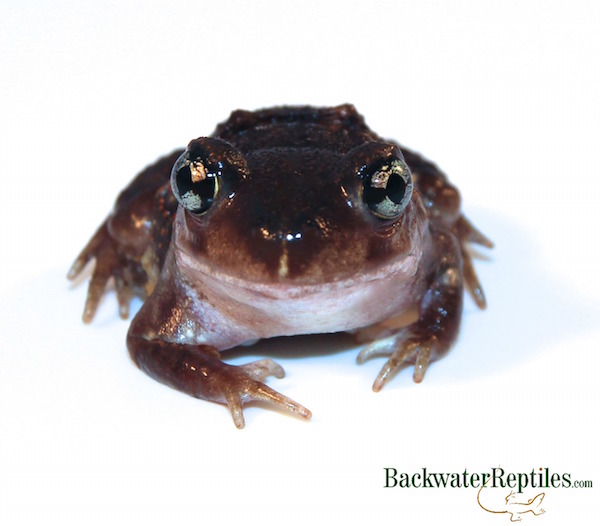We love toads of all shapes and sizes at Backwater Reptiles, but sometimes we just can’t help but be impressed by the size of some of the species we sell. If you love toads and you want an impressive specimen to add to your collection, read on to find out the biggest pet toads sold at Backwater Reptiles.
South American Marine Toad (Rhinella marina)
This is definitely the biggest toad on our list. This species is very closely related to and often even classified as the same species as the common cane toad (Bufo marinus), which is described later on in this article.
However, we are discussing the South American marine toad as a separate species because the animals that are directly from South America are much larger than the cane toads that have been introduced to other areas of the world as a means of pest control.

South American marine toads can attain snout to vent lengths of close to ten inches and that measurement doesn’t include their powerful limbs! There are some pictures circulating online of specimens much larger!
These toads are classic-looking in appearance, meaning they have bumpy, ridged, skin and are a flat brown in color.
People enjoy keeping these South American giants because their size is simply so massive. Big size equals big appetite and these toads do not disappoint when it comes to feeding time. They are quite entertaining to feed and they will consume large feeder insects with no qualms.
If you are interested in one of these giant beauties, Backwater Reptiles has South American giant marine toads for sale.
Smooth Sided Toad (Bufo guttatus or Sapo dorado)
We bet you can’t guess where this toad gets its common name? If you said from its relatively smooth skin (at least for a toad anyways), you’d be correct. While most species of toads are recognized for their warty skin texture, the smooth sided toad has only a few flat, dark bumps. It also has some striking eyes with a red-brown belly covered in cream-colored spots or speckles.

This is a tropical toad species and will therefore require more humidity and heat than is necessary for a standard American toad. Their preferred habitat is leaf litter, so be sure to give them a substrate that is similar in nature such as peat moss or coconut husks so that they can burrow and hide.
Female smooth sided toads can grow to be around ten inches long, whereas the males will stay slightly smaller. Males tend to only grow to be five to six inches long on average.
Backwater Reptiles has smooth sided toads for sale.
Cane Toad aka Marine toad (Bufo marinus)
As we’ve already mentioned, cane toads are very closely related to the South American giant marine toad and are actually very commonly even considered to be the same species.
For the sake of this blog article, we’re grouping the South American toad and the far more common cane toad (which to confuse things further is also simply called the “Marine Toad”) separately as they can originate from different locations and have a sizable difference in total proportions.

Cane toads are found commonly in the United States, Central America, and South America. They have been introduced into other places as forms of pest control and are actually considered invasive species by a lot of communities.
Well-fed, captive cane toads can grow quite large because they do have monstrous appetites. A large size for a cane toad is around eight inches long, although some will get larger.
Cane toads can also get fat if you don’t watch what you feed them. Like all the toads on this list, they will eat pretty much any invertebrate they can fit in their mouth. We feed ours crickets, roaches, meal worms, night crawlers, and occasional wax worm treats.
If you want a cane toad of your own, Backwater Reptiles sells them. We’ve also written an article detailing the history of the invasive nature of this species and how you can be a responsible cane toad owner.
Conclusion – Biggest pet toads
Most toads are pets that are better for being exhibited than being handled. In other words, even large toads with less finicky temperaments than their smaller cousins still don’t really enjoy being handled. We recommend them as pets for people who are fine with a less than interactive animal.
If you’re in the market for a very large toad that you can show off to your friends and family, the toads on this list are all good species to start with.





